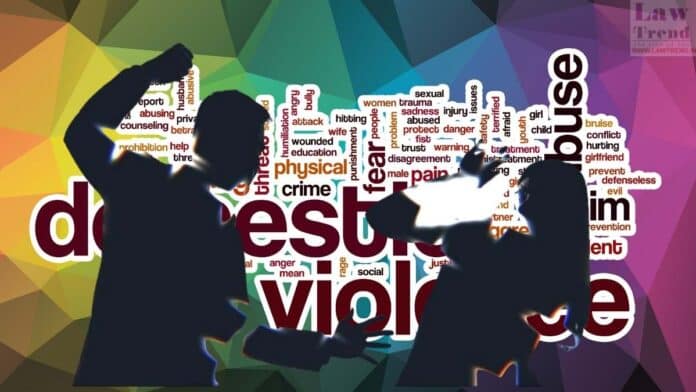The Oxford dictionary defines domestic violence as “a concept that refers to coercive, threatening, controlling, and violent behaviour in the home. It may be physical, psychological, emotional, or sexual.” In other terms, it is violence that occurs behind the closed doors of a household where the number of victims (women) is often much higher than it’s depicted. The violence is not only characterised as physical fights, black eyes, or a broken arm; it seeps far deeper than that, traumatising the victim on many levels. With the enactment of the Protection of Women from Domestic Violence Act, 2005 (hereinafter referred to as ‘the act’ for the sake of brevity), it was said that it is for the first time that a woman’s right to live in a violence-free home is recognised; however, despite this transforming legislation, households are still the hotbed of violence. As of 2022, the number of complaints received by the National Commission for Women (NCW) rose to 30,957, including 6,970 domestic violence cases. A slight decline in the number of reported cases in the year 2023 was seen in the report of NCW.
Despite these seemingly grim figures, the judicial branches of the state are expanding the scope of justice by providing relief to the victims by evolving the words of the act in their favour. Recent decisions show a practical shift, strengthening the domestic abuse acts’ legal protections for women. The High Court of Delhi has recently observed that the proceedings under the Domestic Violence Act cannot be taken in a light-handed manner, and such proceedings should not be taken for granted by the defendants. This represents an improvement, although there is still a significant gap. Even with these developments, there is still a startling lack of knowledge about these legal modifications and the rights they provide, which makes it difficult for many women to take advantage of the very safeguards meant to give them more authority. By bringing attention to the changing legal environment and enabling women to demand the safety they are due, this editorial seeks to close this disparity.
As it is mentioned above, merely black eyes or broken arms are not indicators of domestic violence; rather, economic abuse also constitutes the offence of domestic violence, which often goes unnoticed. It includes denial of maintenance, sabotaging a woman’s career, preventing her access to money, and going to work. Tripura HC, while highlighting this facet of domestic violence, stated that economic abuse and domestic violence should be considered synonymous.
With the advent of technology, its use in domestic violence is also escalating. However, it is often brushed under some sub-head of domestic violence rather than being considered separately. Technology-assisted violence is on the rise, yet it is not yet considered a separate form of domestic violence. Gadgets that are used on a daily basis can be used (and are actively used) for spying, stalking, threatening, monitoring messages, using spyware, and harassing the victims. The closer the defendant is to the victim, the greater the extent of abuse.
Lack of awareness: Domestic violence is not limited to a single sect of society. It is a major issue in the marginalised sector of the country. The main reason is the lack of awareness and insufficient resources for the Protection of Women from Domestic Violence Act. In that regard, the Indian administrative system can enforce legal awareness programmes in schools and community events, taking cues from Spain’s strategy and making use of the government’s current infrastructure, such as Anganwadi centres and urban local bodies. Also, a specific amendment related to mandatory awareness programmes at the local level should be incorporated into the act. These awareness programmes at the general level will enlighten the marginalised section of society about the prevalent legislation in their country. Additionally, the organisers of these awareness programmes should also focus on educating the women in these sections about the remedies they have under the Protection of Women from Domestic Violence Act. The main reason for this is the lack of understanding among these women about their rights and privileges. For the same, the collected data from the surveys, educational programmes, and awareness programmes will help in finding the prevalent loopholes in society that strictly need to be filled for availing of the lucrative benefits of this act. This action or initiative will build the trust of the general public in the legal system and will ultimately reduce domestic violence incidents. In addition to all of the benefits, it will foster greater socio-political participation of marginalised women, pushing India towards gender equality.
Conclusion:
With each passing day, domestic violence cases are rising rapidly. Sadly, even after prominent existing legislation in the country, these cases are still at a pace that immediately needs a good legislative halt. The judiciary is actively interpreting the Protection of Women from Domestic Violence Act (2005) to provide comprehensive protection to victims. Recent Supreme Court decisions show a commitment to holding the perpetrators accountable. But there is a fundamental gap-a lack of awareness of these legal developments and the opportunities they offer. Many women still don’t know what real tools they have to empower themselves. Furthermore, the definition of domestic violence needs to be expanded beyond physical injury to include the growing issues of economic abuse and technology-assisted violence. Devices used in everyday activities can be tools for tracking, surveillance, and harassment. Identifying these evolving forms of abuse is important for comprehensive protection. All in all, working at the grass-roots level is the only way to identify the existing loopholes in society. Hence, an effective amendment of awareness programmes and initiatives can be a harbinger in this particular issue.
Article By:
Ms. Yukti Kumar, Assistant Professor at RV University, Bangalore




